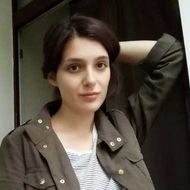See, Feel, and Understand: HSE Researchers to Explore Mechanisms of Movement Perception in Autism

Scientists at the HSE Cognitive Health and Intelligence Centre have won a grant from the Russian Science Foundation (RSF) to investigate the mechanisms of visual motion perception in autism. The researchers will design an experimental paradigm to explore the relationship between visual attention and motor skills in individuals with autism spectrum disorders. This will provide insight into the neurocognitive mechanisms underlying social interaction difficulties in autism and help identify strategies for compensating for them.
Autism spectrum disorders (ASD) are a group of neurodevelopmental conditions resulting from atypical brain development, which can impact communication skills and social behaviour. Individuals with varying degrees of autistic traits may also experience motor difficulties, including impaired muscle tone, reduced movement accuracy and strength, coordination challenges, and underdeveloped balance. The scientists hypothesise that difficulties in social interaction experienced by individuals with ASD may be linked to impairments in visual perception and cognitive processing of movement.
A research team from the Cognitive Health and Intelligence Centre at the HSE Institute for Cognitive Neuroscience, led by Deputy Director of the Centre Anna Izmalkova, will test this hypothesis as part of a project funded by a new grant from the Russian Science Foundation. Andriy Myachykov, Leading Research Fellow at the Institute, will serve as the academic advisor of the study. Research assistants Elena Gavrilova and Ksenia Novoselova will participate in developing the experimental paradigm and collecting data.
As part of the project, the researchers will use eye-tracking technology to examine the specific patterns characteristic of individuals with varying degrees of autistic traits and how these patterns impact their ability to recognise others' movements and emotions. To obtain the most accurate and reliable results, the researchers will develop a comprehensive experimental paradigm that includes a range of stimuli across various contexts, such as daily activities, social communication, and non-verbal expression of emotions.
'An individual's perception of the world is closely linked not only to attention but also to motor skills. For example, someone who moves differently from others may have difficulty interpreting the movements of those around them. Motor coordination issues may be linked to impairments in the functioning of mirror neurons, which are responsible for imitating and understanding the actions of others,' Elena Gavrilova explains.
'We will analyse both movement and gaze direction. An eye tracker allows us to track precisely where a subject is looking—whether they focus on the other's facial features while completing a task with an emotional component or miss key social signals,' adds Ksenia Novoselova.
The authors plan to have everything necessary for the experiment prepared by the end of 2025. 'What makes this grant particularly important to us is that our research extends beyond medical diagnostics. We view autism as a broad spectrum of conditions that do not always fall within the category of clinical cases. This approach allows for consideration of not only impairments but also potential compensatory mechanisms that may be more developed in highly functioning individuals,' explains Novoselova.
The findings from this experiment could potentially be used to develop a technique for training individuals to recognise movements and emotions, helping compensate for social difficulties in autism.
See also:
HSE Scientists Test New Method to Investigate Mechanisms of New Word Acquisition
Researchers at the HSE Centre for Language and Brain were among the first to use transcranial alternating current stimulation to investigate whether it can influence the acquisition of new words. Although the authors of the experiment have not yet found a link between brain stimulation and word acquisition, they believe that adjusting the stimulation parameters may yield different results in the future. The study has been published in Language, Cognition and Neuroscience.
Twenty vs Ten: HSE Researcher Examines Origins of Numeral System in Lezgic Languages
It is commonly believed that the Lezgic languages spoken in Dagestan and Azerbaijan originally used a vigesimal numeral system, with the decimal system emerging later. However, a recent analysis of numerals in various dialects, conducted by linguist Maksim Melenchenko from HSE University, suggests that the opposite may be true: the decimal system was used originally, with the vigesimal system developing later. The study has been published in Folia Linguistica.
Scientists Rank Russian Regions by Climate Risk Levels
Researchers from HSE University and the Russian Academy of Sciences have assessed the levels of climate risks across Russian regions. Using five key climate risks—heatwaves, water stress, wildfires, extreme precipitation, and permafrost degradation—the scientists ranked the country’s regions according to their need for adaptation to climate change. Krasnoyarsk Krai, Irkutsk Region, and Sverdlovsk Region rank among the highest for four of the five climate risks considered. The study has been published in Science of the Total Environment.
HSE Researchers Teach Neural Network to Distinguish Origins from Genetically Similar Populations
Researchers from the AI and Digital Science Institute, HSE Faculty of Computer Science, have proposed a new approach based on advanced machine learning techniques to determine a person’s genetic origin with high accuracy. This method uses graph neural networks, which make it possible to distinguish even very closely related populations.
HSE Economists Reveal the Secret to Strong Families
Researchers from the HSE Faculty of Economic Sciences have examined the key factors behind lasting marriages. The findings show that having children is the primary factor contributing to marital stability, while for couples without children, a greater income gap between spouses is associated with a stronger union. This is the conclusion reported in Applied Econometrics.
Fifteen Minutes on Foot: How Post-Soviet Cities Manage Access to Essential Services
Researchers from HSE University and the Institute of Geography of the Russian Academy of Sciences analysed three major Russian cities to assess their alignment with the '15-minute city' concept—an urban design that ensures residents can easily access essential services and facilities within walking distance. Naberezhnye Chelny, where most residents live in Soviet-era microdistricts, demonstrated the highest levels of accessibility. In Krasnodar, fewer than half of residents can easily reach essential facilities on foot, and in Saratov, just over a third can. The article has been published in Regional Research of Russia.
HSE Researchers Find Counter-Strike Skins Outperform Bitcoin and Gold as Alternative Investments
Virtual knives, custom-painted machine guns, and gloves are common collectible items in videogames. A new study by scientists from HSE University suggests that digital skins from the popular video game Counter-Strike: Global Offensive (CS:GO) rank among the most profitable types of alternative investments, with average annual returns exceeding 40%. The study has been published in the Social Science Research Network (SSRN), a free-access online repository.
HSE Neurolinguists Reveal What Makes Apps Effective for Aphasia Rehabilitation
Scientists at the HSE Centre for Language and Brain have identified key factors that increase the effectiveness of mobile and computer-based applications for aphasia rehabilitation. These key factors include automated feedback, a variety of tasks within the application, extended treatment duration, and ongoing interaction between the user and the clinician. The article has been published in NeuroRehabilitation.
'Our Goal Is Not to Determine Which Version Is Correct but to Explore the Variability'
The International Linguistic Convergence Laboratory at the HSE Faculty of Humanities studies the processes of convergence among languages spoken in regions with mixed, multiethnic populations. Research conducted by linguists at HSE University contributes to understanding the history of language development and explores how languages are perceived and used in multilingual environments. George Moroz, head of the laboratory, shares more details in an interview with the HSE News Service.
Slim vs Fat: Overweight Russians Earn Less
Overweight Russians tend to earn significantly less than their slimmer counterparts, with a 10% increase in body mass index (BMI) associated with a 9% decrease in wages. These are the findings made by Anastasiia Deeva, lecturer at the HSE Faculty of Economic Sciences and intern researcher in Laboratory of Economic Research in Public Sector. The article has been published in Voprosy Statistiki.




